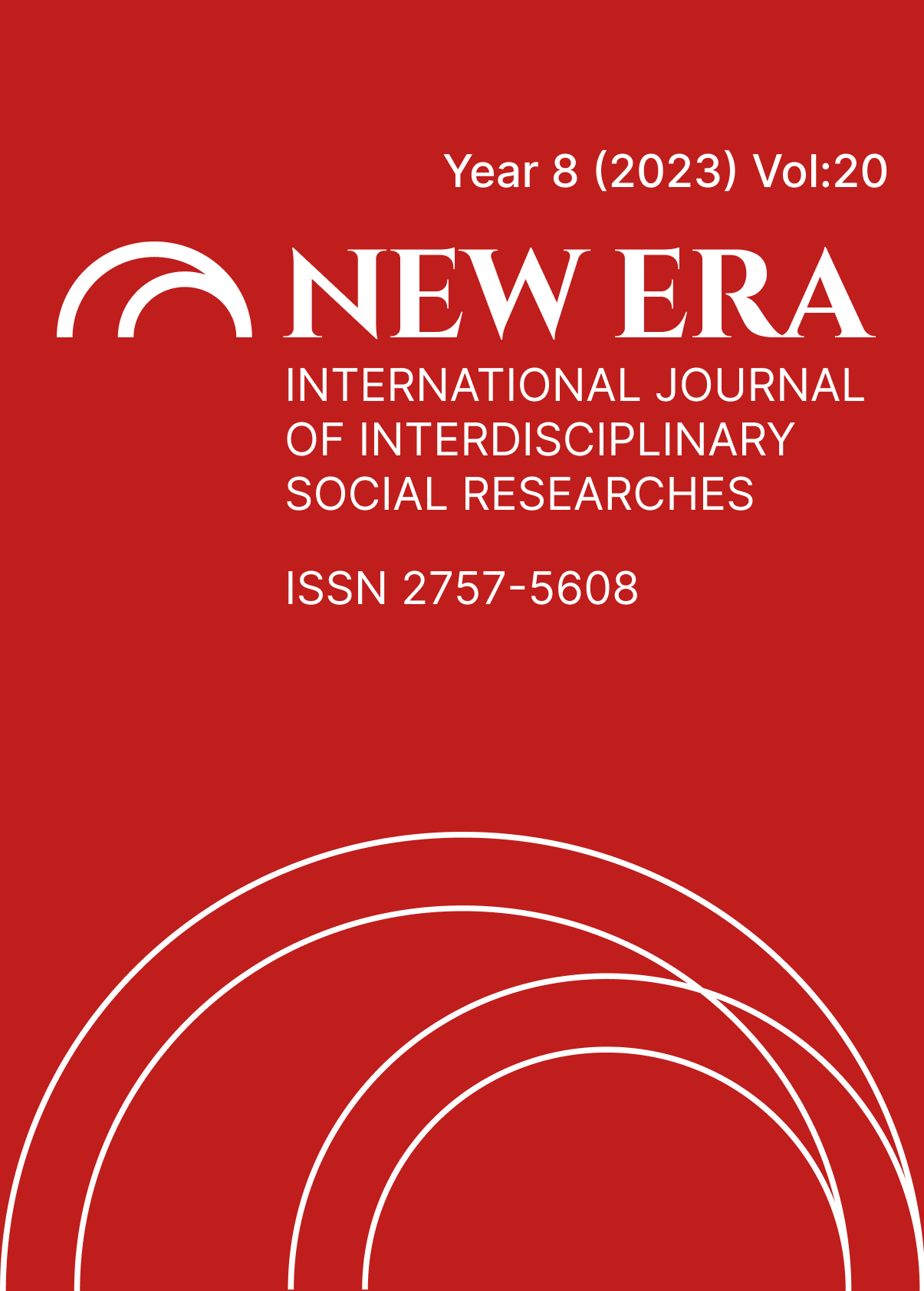UNIQUE WEAVING DESIGN STUDY INSPIRED BY CULHA WEAVING FROM SANLIURFA REGION
DOI:
https://doi.org/10.5281/zenodo.8344798Keywords:
Culha, dokuma tasarımı, bezayağı dokuma, geleneksel dokuma.Abstract
The art of weaving is one of the oldest arts with a wide range of uses from prehistoric times to the present day. Turks, one of the oldest societies in the world, have developed the art of weaving according to their culture and lifestyle. Turks living in Central Asia first obtained yarn from wool obtained from animals. They learned how to weave using yarn and diversify it with different materials. Yarn selection and knitting type are also important in an aesthetically pleasing woven fabric. Especially the colors used should reflect the desired motif beautifully. In our country, there are thousands of woven fabrics that come from the past and are almost forgotten today. Every city and every region has its own weaving techniques, motifs and decorations. Today, the number of weaving masters who continue these weavings is very few. For this reason, we are deprived of knowing most of the woven fabrics, which are our cultural heritage in our history. There is a great effort in our country to revive our weaving arts, which are on the verge of being forgotten. Our traditional heritage from our past carries us to the future. In this study, in order to remind the forgotten weavings and to keep our traditional heritage alive, six different samples, inspired by the culha weaving belonging to the Şanlıurfa region, were designed on a hand-loom. Especially brown and green were chosen from the colors used in broadcloth weaving. Plaincloth was used as a weaving technique. The study was carried out according to the qualitative research technique. Based on traditional weaving motifs, tradition and modernism were combined. Three of these patterns are woven as the interpretation of the past, and the other three as the interpretation of the future. The six woven parts are joined together to resemble a DNA helix. It is aimed to explain that we can leave a trace in the future with our genes from the past. The weaving product created was named “From the Past to the Future”. It is aimed to revive our cultural heritage and bring a new interpretation for the designed product.
References
Akpınarlı, F,. Şanlıurfa Culha Dokumacılığı. Şanlıurfa İli Kültür Eğitim Sanat Ve Araştırma Vakfı Yaylnları No: 13 Kültür Dizisi: 9. 1996.
Ay, B., Sanat Objesi Olarak Tekstil, İstanbul: Alternatif Yayıncılık, ss.120, 2018.
Aytaç, Ç. El Dokumacılığı. İstanbul: Milli Eğitim Basımevi. 1982.
Çoruh, E. Avcıoğlu Kalebek, N. Özdemir, G. Öztürk, T. Dokuma Kumaş Tasarımı ve Örnek Uygulamamaları. İdil Sanat ve Dil Dergisi, 63(8), 1603-1609. DOI: 10.7816/idil-08-63-16. 2019.
Gürsu, N.,Türk Dokumacılık Sanatı-Çağlar Boyu Desenler, Redhouse Yayınevi ss.17,1988.
İmer, Z.,Dokuma Tekniği Cilt 1, Sistem Ofset ss.1,1997.
Kaya, F ve Cavidan E., Mekikli El Dokumacılığı. 1989.
Keskin, Tuna S. Büyükbayraktar, R. B. Armürlü Kumaşlar İçin Fiziksel Tasarım Çözümlemeleri Sunan Bir Dokuma Kumaş Tasarım Programı. Tekstil ve Mühendis, 27(117), 12-21. 2019.
Megep Modüller. 2011a. Bezayağı Dokuma. www.megepmoduller.com> Erişim Tarihi: 4 Nisan 2020
Megep Modüller. 2011b. Dimi Dokuma. www.megepmoduller.com> Erişim Tarihi: 4 Nisan 2020.
Metlioğlu Halaçeli, H. Tekstil Tasarım Eğitiminde Sinema Temalı Dokuma Kumaş Tasarımı . İnönü Üniversitesi Sanat ve Tasarım Dergisi, 177-186. 2012.
Metlioğlu Halaçeli, H. Dokuma Kumaş Tasarımında Yaratıcılık İçin Bir Yöntem Önerisi. Yedi: Sanat, Tasarım ve Bilim Dergisi, 41-50. 2015a.
Metlioğlu Halaçeli, H. Günümüz Dokuma Kumaş Tasarımında Deneysel Yüzey Araştırmaları. Anadolu Üniversitesi Sanat, Tasarım ve Bilim Dergisi, 5(2) 89-111. 2015b.
Ölmez, F. N. ve Çotaoğlu C.,Türkiye’de Tekstil Sanatında Kadın Sanatçılar, İnönü Üniversitesi Uluslararası Sosyal Bilimler Dergisi, Sayı 2 ss:106,107, 2013.
Önlü, N. Günümüz Giysilik Kumaşlarının Tasarım Ve Teknik Açıdan İncelenmesi. Tekstil Maraton, 12- 23. 2004.
Özdemir, G ve Kahyeoğlu T. Özgün Dokuma Yüzey Tasarımlarının Giysi Üzerine Uygulamaları”. İdil Sanat ve Dil Dergisi, 72 s. 1259–1269. doi: 10.7816/idil-09-72-06. Ağustos 2020.
Şanlı, L. Dokuma Tasarımında Atık Plastik Poşetlerin Doku Olanaklarının Araştırılması. Yüksek Lisans Tezi, Adana: Çukurova Üniversitesi Sosyal Bilimler Enstitüsü, 2018.
Uğurlu, S.S. Geleneksel Dokumalarda Motif desen Bağlantıları, Kesit Akademi Dergisi, Cilt 7, Sayı 27, 162. İstanbul.2021.
Yurtgüven, M. Mensucat, Pamuk, Keten, İpek ve Sentetik İpeklerle Düz Hendeseli, Armür ve Jakar Çiçekli Dokumacılık Dersleri. Bursa Aysan Basımevi, 1953, 385-432 Sayfalararası İstanbul: 1949.
WEB
Erişim tarihi: 3 Ocak 2020, http://www.tekstildershanesi.com.tr/bilgi-deposu/koleksiyon-hazirlama.html
Downloads
Published
How to Cite
Issue
Section
License
Copyright (c) 2023 NEW ERA INTERNATIONAL JOURNAL OF INTERDISCIPLINARY SOCIAL RESEARCHES

This work is licensed under a Creative Commons Attribution-NonCommercial 4.0 International License.


